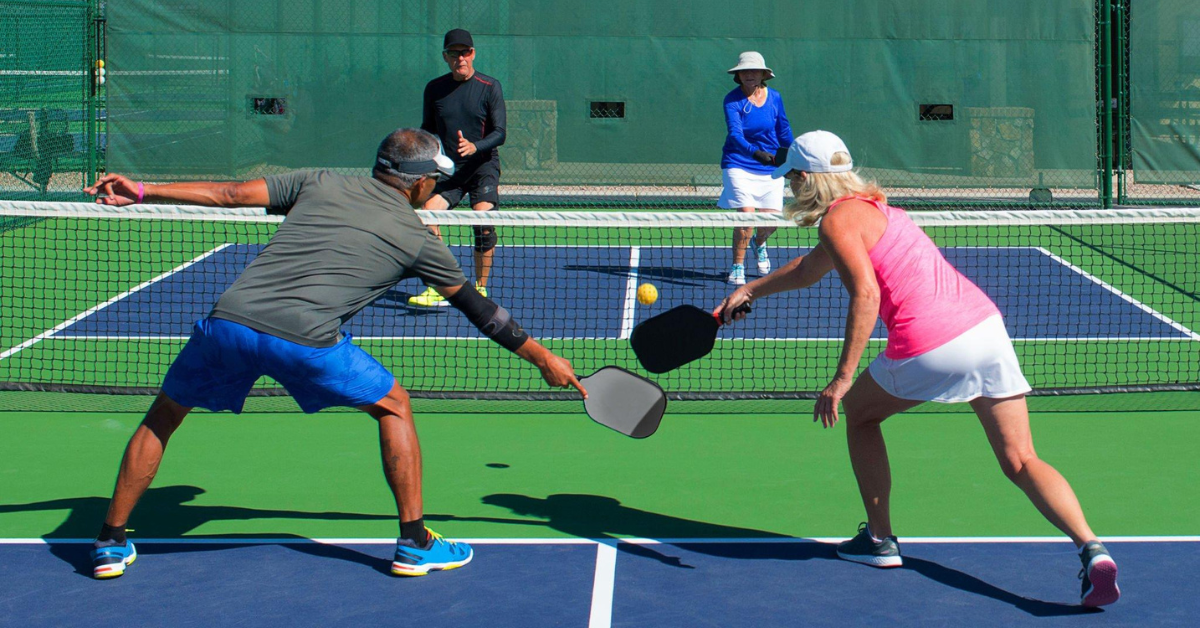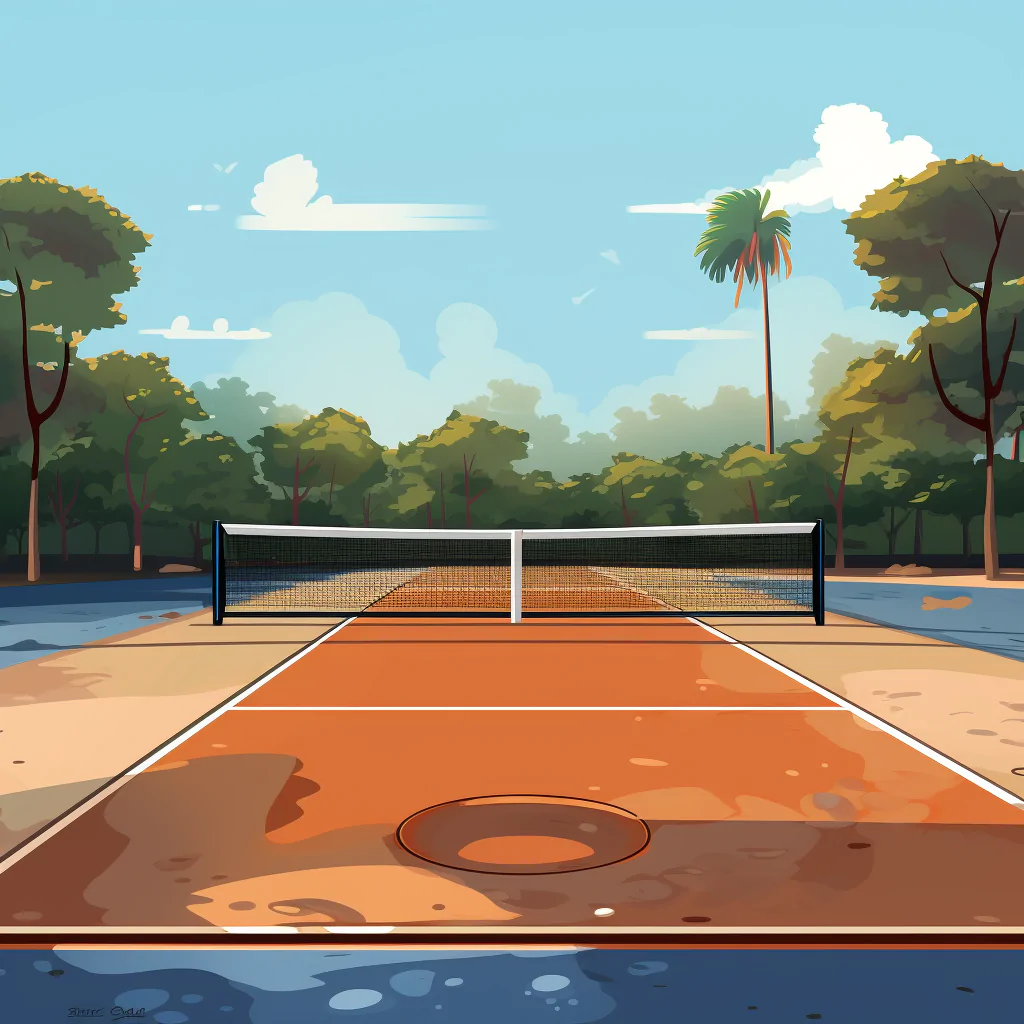Pickleball is a dynamic sport that demands adaptability as players strive to outmaneuver their opponents. One crucial aspect of pickleball tactics is court positioning, a strategic dance that players perform to seize the upper hand.
Understanding Court Positioning in Pickleball
In pickleball, court positioning refers to where a player strategically places themselves concerning both their opponent and the ball. It’s all about striking the right balance between offense and defense, ensuring maximum court coverage while leaving minimal gaps. Skillful positioning empowers players to dictate the flow of the game, maintain control, and exert pressure on their opponents.
Analyzing Your Opponent’s Strengths and Weaknesses
Before making any adjustments to your court positioning, it’s essential to assess your opponent’s skills and vulnerabilities. This analysis provides insights into your opponent’s playstyle, revealing patterns and likely shot choices.
Identifying Your Opponent’s Playing Style
To adapt effectively, observe your opponent’s playing style. Are they aggressive baseline players, relying on strong groundstrokes? Or do they favor a defensive counterpuncher approach, adept at returning shots? Your court position can be strategically altered based on your opponent’s style.
Recognizing Key Patterns and Shot Selection
During a match, paying attention to your opponent’s shot tendencies is paramount. Do they have a signature shot or a particular weakness, like a vulnerable backhand or difficulty with high balls? Recognizing these patterns allows you to anticipate your opponent’s moves and adjust your court positioning accordingly.
Adapting Court Positioning for Different Opponents
To succeed in pickleball, it’s vital to customize your court positioning to exploit your opponent’s strengths and weaknesses. Here’s how you can adjust your position against various playing styles:
- Against Aggressive Baseline Players: Maintain a deeper court position when facing opponents who favor powerful groundstrokes. This grants you more time to respond to their shots with depth and precision. Utilize angles and spin to move your opponent around the court and create opportunities to approach the net.
- Against Defensive Counterpunchers: When up against defensive counterpunchers skilled at retrieving shots, seize control by inching closer to the baseline. Applying pressure with aggressive shots and early ball retrieval can disrupt their rhythm and push them into vulnerable situations.
- Against Serve and Volley Specialists: Adapt your court position when facing serve and volley specialists. Stand slightly farther back to gain extra time for countering their net-bound shots. Focus on strong returns, low passing shots, and forcing them away from the net.
- Against Net Rushers: Net rushers aim to close in on the net swiftly. To counter their aggressive net play, employ passing shots or lobs that force them to backtrack. Target open areas to force lateral movement, regaining control of the point.
Adjusting Court Positioning for Specific Shots
In addition to adapting to your opponent’s playing style, your court position should vary based on the type of shot in play:
- Return of Serve: Move closer to the baseline when returning a serve, enabling you to take the ball early and limit your opponent’s response time. Assert your presence with bold returns right from the onset.
- Groundstrokes: Typically, players stand behind the baseline for groundstrokes. However, adjust your court position according to the pace and quality of your opponent’s shots. Step back for fast shots and move forward to catch slow ones early.
- Volleys: When transitioning to the net and executing volleys, position yourself closer to the net to block shots and close off passing lanes. Staying near or inside the service line reduces your opponent’s time and options.
- Overheads: Move closer to the net for overhead shots and be ready to advance swiftly. An aggressive overhead position sets the stage for powerful smashes and scoring opportunities.
Implementing Court Positioning Strategies
Once you’ve assessed your opponent’s strengths and weaknesses and adjusted your court positioning, it’s crucial to put these strategies into action:
- Offensive Positioning: When aiming to seize control of the point, transition into an offensive court position. Move closer to the net to force your opponent onto the defensive.
- Defensive Positioning: In defensive situations, adapt your court position to enhance coverage and create angles for defensive shots. Maintaining a lower position enables you to retrieve shots and prolong rallies.
- Transitioning Between Positions: As the game unfolds, agility is key. Effortlessly shift between different court positions, moving from defense to offense and vice versa. Quick thinking and nimble footwork are essential.
Practicing and Mastering Court Positioning
To refine your court positioning skills, incorporate focused practice sessions into your training regimen:
- Footwork Drills: Improve agility, speed, and court coverage through footwork routines. Utilize ladder drills, cone drills, and lateral movements to enhance your footwork and adaptability.
- Video Analysis: Study match footage, particularly of top players, to observe how they adjust their court positioning in response to their opponents’ strengths, weaknesses, and shot selection. Use this knowledge to enhance your own positioning.
- Simulated Match Scenarios: During practice, simulate scenarios that mirror real-game situations. Practice adjusting your court position for different opponents and shot types. This helps sharpen your instincts and decision-making abilities during actual matches.
Common Mistakes to Avoid
While mastering court positioning is crucial, steer clear of these common pitfalls:
- Standing Too Far Back: Overly defensive positioning can prevent you from exerting pressure and seizing control of the point. Strive for a balanced position that combines defensive coverage with offensive potential.
- Staying in One Position: Predictability can be your downfall. Avoid rigid positioning throughout the match by remaining adaptable. Tailor your court placement to exploit your opponent’s strengths and weaknesses.
- Failing to Adapt: Every opponent is unique. If you neglect to adjust your court positioning according to your adversary’s style, you risk reduced success. Stay observant, analyze your opponent, and adapt your position accordingly.
Conclusion
In pickleball, the ability to adjust your court positioning based on your opponent’s strengths and weaknesses is a crucial element of success. By mastering this skill, you gain a competitive edge, enabling you to outmaneuver your opponents and elevate your game to new heights.


